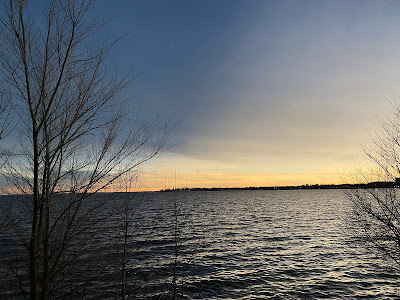A warm front lifting across southwestern Quebec early Sunday morning was the trigger for a cluster of thunderstorms that produced spectacular lightning. Nocturnal thunderstorms tend to be weaker than there afternoon cousins, but these has a little additional energy and instability. While the storms remained below severe criteria, they did produce thousands of dangerous lightning strikes. Thankfully most of the lightning was cloud to cloud, and only a few power outages were reported.
The sky was constantly glowing, with nearly continuous flashes of blue and orange between 4 and 5AM in Montreal. Along with the lightning was persistent rolling thunder, making it an early morning for many. Accompanying the light show was just over 21mm of rain here in Ile Perrot. The thunderstorms rapidly moved off to the southeast while dissipating.
I was up early with my beloved 15 year old terrier who no longer has a working internal clock. The short early morning walk was lit up as if it was daytime. We retreated indoors quickly. It was some of the most intense lightning I have seen since my days in southern Saskatchewan
The remainder of the day was mild and muggy, with additional showers and isolated thunder, mostly south of the city along the New York border and across eastern Ontario.
We have a mixed weather week ahead, starting off cool, but warming up by Thursday into the low 20s. Wet weather is expected Monday night as another warm front lifts north into the region. Showers and more thunderstorms are possible.
A significant and destructive tornado outbreak occurred on both Friday and Saturday across portions of the southern plains and Mississippi Valley. Over 100 tornadoes were reported by the National Weather Service. Powerful long-lasting tornadoes swept across Iowa and Nebraska on Friday, including a 2-3 mile wide wedge tornado near Lincoln, Nebraska. Damage was complete in many small communities, including Elkhorn, Nebraska, with homes leveled to their foundations, and vehicles tossed around. Miraculously there were no fatalities reported from Friday's storms, with the National Weather Service providing timely warnings.
Another round of powerful storms targeted Oklahoma Saturday night, producing a strong tornado in the community of Sulfur. The damage to the downtown core of that community southeast of Oklahoma City was nearly complete. Sadly the Oklahoma storms did produce at least 4 fatalities, with first responders still sifting through mounds of debris as I write this post.
The National Weather Service will investigate the damage from the weekend storms to determine the strength, but it is clear to many long time forecasters and storm chasers that some of these tornadoes were high end EF-4 or even perhaps an an EF-5, capable of winds in excess of 200mph (320 KM/H).











